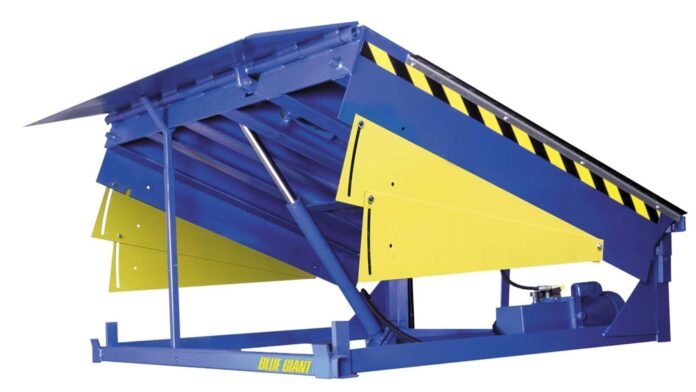The warehouse sector has advanced tremendously in recent years. Many automated solutions are now available to carry out the duties formerly done by hand. Similar to this, some warehouse equipment is portable while others are static.
Dock levelers are fixed-position devices created for secure loading and unloading between the docked vehicle and the workspace. Dock levelers, made of a movable metal component called the lip, are situated at the docking bay door. Although all dock levelers offer similar operations, they are classified into edge-of-dock, vertical, and pit levelers.
But why should you consider installing a dock leveler in the first place? How does a metallic piece enhance your facility’s performance? Let’s look at the benefits of a Loading Dock Leveler.
What Can Dock Levelers Do for Your Loading Area?
A dock leveler ensures smoother and more efficient cargo operations. Moreover, they also prevent unnecessary lags and accidents. Purchasing a dock leveler may seem irrelevant right now. But its pros will change your perspective entirely.
Reduces Efforts
The incompatibility of the bay’s entrance height and the docked vehicle’s floor is ordinary in warehousing. A quality dock leveler is a bridge between them so you can comfortably do the required job. Also, it reduces the working crew’s efforts as they can smoothly move in and out of the docked vehicle during cargo transportation.
Productivity Boost
Naturally, when you have a leveled path between the dock’s door and the truck, you’ll have to put in less and get more done. Maintaining good productivity is essential in larger docking stations, as the timeliness of operations is crucial.
Shock Minimization
Warehouse vehicles or manual transportation face hindrances in traditional planks. Since there are no shock absorption mechanisms, the plank may break, leading to further inconvenience. However, dock levelers are specifically designed to endure heavy weights.
The shock-absorbing mechanisms reduce the unexpected jerks (by transferring the force to the ground) to keep the structure from breaking.
Workable with Motorized Vehicles
Manually lifting is not ideal when you unload tons of cargo daily. Hence, you require motorized vehicles, like forklifts, pallet jacks, side lifters, etc. However, they are not very lightweight and require structural strength and grip on the working plane.
Dock levelers have ergonomic designs on their base to ensure the wheels of the vehicles get a good hold. It provides smoother transportation without any danger of a loaded vehicle skidding or slipping.
Low Maintenance
Dock levelers are made from galvanized steel, and as the intrinsic property of steel, they are robust to damage. These levelers last longer than conventional (wooden or metal planks) and require little maintenance. Moreover, they are resistant to environmental exposure and uneven temperatures.
Efficiency
If you’re using a conventional plank to do the everyday cargo operation, it won’t ensure efficiency. For instance, the plank’s width might not match with the cargo’s, or the warehouse vehicle may be too heavy for the plank to endure. Hence, you’ll need to gather additional support and supplies every time the cargo changes.
Deploying dock levelers at your workhouse ensures efficiency. They are integrated at the dock’s door (in a pit or at the outer edge of the dock). As the cargo appears, you can put a lever or use a computer to open and close the levelers to do the loading/unloading.
Conclusion
Dock levelers made a commercial appearance in 1953. Before that, wooden or metallic planks were used in warehouses to bridge the bay and the vehicles. Dock levelers are indispensable for an excellent dock station as they provide years of reliable service and increase the dock’s efficiency.
Moreover, they also help you gain a market edge. Time is crucial for every cargo supplier. Hence, they will likely unload their cargo at stations where the staff doesn’t run to fetch a new plank every time!














